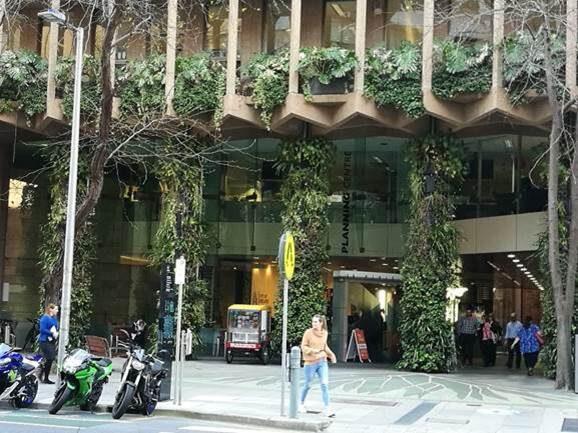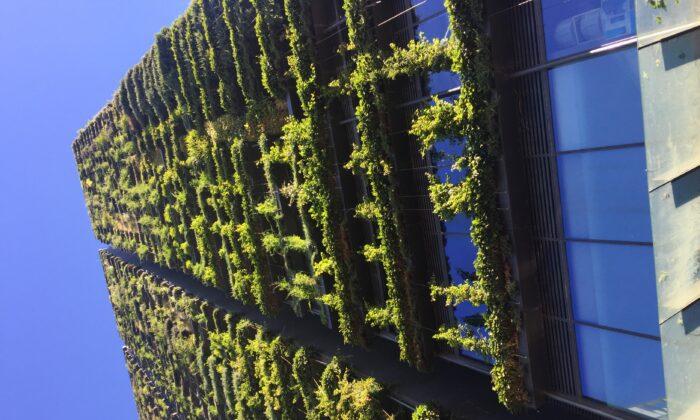The average prices of the planter boxes that are used to house the vertical vegetation range from $500 to $700 (US $400-$500) a square metre. However, researchers said that over time the energy savings are considerable and more than exceed the initial cost outlay.
Additionally, the co-author of the recent paper, UniSA Emeritus Prof. Simon Beecham, said in an email to The Epoch Times that in winter, living walls have a positive influence as a thermal insulation layer— similar to a blanket.

Experimenting with Living Walls
In 2018, Rosmina Bustami, who, at the time, was a UniSA civil engineering PhD student, conducted an experiment to determine the potential energy savings of vertical gardens on the external walls of western-facing houses.The experiment observed a 144-pot living wall located in Adelaide for over 18 months.
In Adelaide, over the course of the experiment, the average, minimum, and maximum daily temperatures were, respectively, 18.7, 2.6, and 45.6 degrees Celsius (65.7, 36.7, and 114 degrees Fahrenheit), and the average air humidity was 64 percent.
Water-Sensitive Urban Designs
Water-sensitive urban designs are used to mitigate flood risks, moderate temperature, enhance urban biodiversity, and improve water quality. they are also another way to reduce heat in the urban environment.Permeable pavements like porous concrete can act as a non-vegetated water-sensitive urban design system because they are able to absorb stormwater, unlike conventional impermeable concrete or asphalt pavements.
“Both living walls and porous concrete roads are now being investigated for their ability to cool the urban environment,” he said.
Additionally, Beecham said that both living walls and permeable pavements have a number of built-in mechanisms for pollutant removal.
“The predominant mechanism in porous pavements is mechanical filtration, which removes sediments and associated pollutants such as heavy metals,” he said.
“The soil in the living walls also serves the same filtration purpose, but the vegetation provides additional pollutant removal mechanisms such as nutrient removal.”

Porous Concrete vs Living Walls
Bustami, who is now based at the Universiti Malaysia Sarawak, is the lead author of the paper publishing comparisons between porous concrete and living walls, which is co-authored by Beecham and UniSA researcher Assoc Prof. James Hopeward.In this paper, the researchers compared the evapotranspiration rates of plants within living walls to the evaporation rates of permeable pavements. The experiments demonstrated that porous concrete is, at best, only 15 percent as effective at cooling as vertical gardens, and in the worst cases, only four percent as effective.
“The porous concrete pavement was able to evaporate infiltrated rainfall through the air gaps in the material,” Beecham said.
“This evaporation did cool the air temperatures above the pavement but only 15 percent as much as an equivalent area of the living wall.
Beecham said that in the case of porous concrete, once the upper 13mm or so of stored rainfall is evaporated, very little of the lower stored water can escape or evaporate.
“The upper/available rainwater typically takes only a few hours to evaporate, depending on the ambient temperature and humidity,” he said.
“This process is even more enhanced by living walls because the vegetation transpires water for much longer periods. Also, living walls are irrigated more frequently than it rains.”




